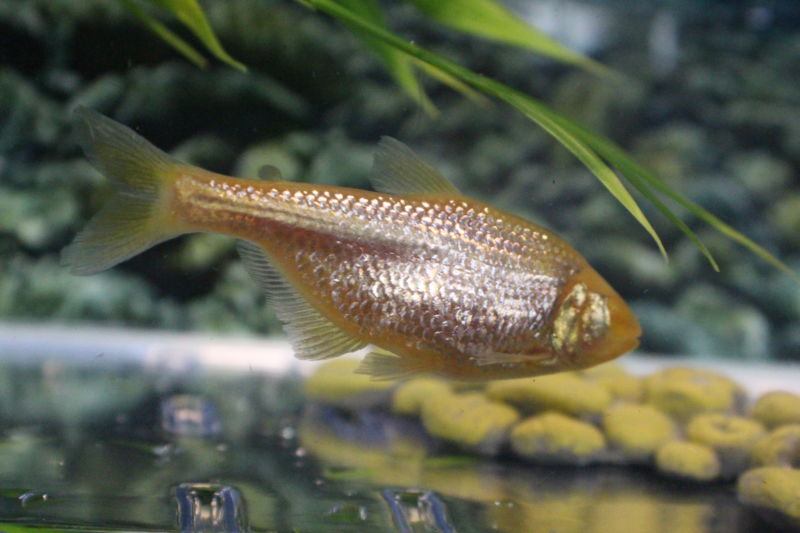
Unusual animals in the world quite a lot. One of them is the radiant fish of the species
Astyanax mexicanus or “Mexican tetra”. Interestingly, representatives of the same species can vary quite widely. Some live in rivers and do not stand out. But there are populations living in dark caves with a small amount of food in the water. However, representatives of this species are almost always very well-fed.
Scientists decided to study the characteristics of the blind representatives of the species and unexpectedly discovered a unique feature in cave fishes. It turns out that they are insulin resistant. This is a mutation that is also found in humans, although it is extremely rare. But in humans, insulin resistance, known as
Rabson-Mendelhall syndrome , leads to serious consequences for the body (disruption of the internal organs, deformation of bones, etc.). But the fish from the caves are quite healthy.
They, besides other differences from other representatives of their species, are albinos, that is, they are completely devoid of pigmentation. Their color is white and pink. Fish learned to navigate in the pitch darkness with the help of a side line, which is very sensitive to small changes in pressure. In the caves where the fish lives, food is brought mainly by floods, that is, the diet is extremely irregular. During periods of abundance of food, the fish overeat and store fat deposits, which help it to survive in subsequent periods of starvation.
A team of American scientists studying cave fish found mutations in animals in the MC4R gene. It affects the regulation of appetite. By the way, this discovery alone has helped to start the fight against the obesity epidemic among people.
The same team from Harvard Medical School continued to investigate the genome of A. mexicanus, which helped to detect a mutation in the fish genome responsible for insulin resistance. According to scientists, the discovery will help create new methods of treating severe hereditary diabetes.
Insulin resistance, namely, it is referred to above, is a violation of the metabolic response of the body of an animal or person to insulin. When a healthy person eats food, his blood glucose level rises. Accordingly, the body reacts by releasing the hormone insulin into the blood, allowing it to absorb excess sugar. If a person has insulin resistance for one reason or another, then the level of glucose in the blood is always high. As far as we understand, the fish of the species A. Mexicanus feel just fine and without insulin.
Scientists were extremely surprised by the results of their work. As mentioned above, the violation of the normal regulation of glucose usually causes big problems in the body, and not one, but many. But the fish mutation went only benefit. In humans and animals with high blood sugar, proteins do not function normally. But on the cave fish proteins it does not affect.
So far, the reasons that the tetra has no problems with insulin resistance are not fully understood. The study of fish is still ongoing. But some details have already been clarified. In particular, blind fish live as much as their sighted relatives. Their fertility is about the same level. But the aging process in blind tetr go a little slower.
Biologists decided to conduct an experiment, and began to cross blind fish and ordinary ones. The hybrids that appeared as a result, received an insulin mutation. Their blood sugar levels were constantly elevated in comparison with “relatives” who did not have a mutation. Moreover, the effect of elevated blood sugar levels was observed both after feeding and after fasting.
As it turned out, the mutation was hidden in the insulin receptor gene. During the mutation, proline was replaced with leucine, and the animal became insulin-resistant. After the result was obtained, the scientists did not stop at what had been achieved and developed a different type of fish with insulin resistance - danio-rerio. These fish also began to gain weight faster than their relatives with normal insulin sensitivity.
Now scientists are looking for other genes that affect the metabolism of the cave tetra. The co-author of the work, Nicolas Roner, argues that evolution may not lead to such a result, a vivid example of this is the entire animal and plant world of our planet. By the way, the results of the work were
published in the authoritative scientific publication Nature.
Why do scientists have insulin resistant fish? In order to try to create new methods of regulating the level of glucose in the blood, as well as learn how to treat metabolic disorders in people. Biologists also want to fully understand why cave fish, having such a mutation, continue to be in good shape during their whole life. It may well be that in the body of fish there are certain compensatory mechanisms that may be useful for people.